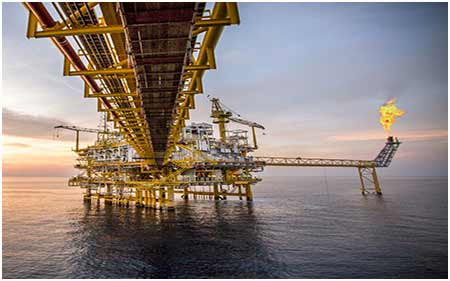As an integrated player in the oil and gas chain, our main task is to produce the energy the world needs.
 03 / 05 / 22
Visitors: 756
03 / 05 / 22
Visitors: 756
Hydrocarbons located deep on the shelf have become a strategic resource for the energy of the future, as well as a serious problem for the renewal of reserves and increase in production.
Reservoir of Growth
According to our prospective studies, the seabed contains about 350 billion barrels of oil equivalent of hydrocarbons, or about 8% of the world's resources. And, according to our estimates, two-thirds of the oil and gas resources located deep on the shelf have yet to be discovered! Their production also continues to grow. In 2015, it was 7.5 million barrels of oil equivalent per day. In 2035 there should be more than 18 million.
These figures explain the significant efforts made by the oil and gas industry and Total, which was a pioneer, to develop technologies that have enabled and will continue to push the boundaries of deep sea exploration. Undoubtedly, deep water is a real reservoir of growth that must be reckoned with in order to meet the ever-increasing demand for energy.
Total, a pioneer and leader of large funds
We started deep sea exploration over 30 years ago, in the 1980s. Our efforts began to bear fruit around the turn of the century, with numerous discoveries made in the late 1990s.
Despite the fact that finding a tank in such an environment is not easy, getting it into production is even more of a challenge. This culture of innovation and technological excellence, embedded in our DNA, allows us to push the boundaries of development despite the limitations associated with these new areas. Over the course of the projects, our engineers and our R&D teams have been able to find solutions to overcome increasingly severe constraints: adaptation to harsher environments, greater water depths, more complex fluids, production optimization, conservation of marine biodiversity. The areas in which we have developed strong skills are extensive: geology, geophysics, drilling, production, floating production supports, environment...
In particular, the discovery of giant deepwater deposits in West Africa prompted the Group to make major investments. Today, the leading operator in this basin, Total, is preparing to launch three new FPSOs by 2018.
Optimize our investments
By incorporating these very diverse skills acquired over time, we are constantly pushing back technological barriers to exploration and production in deep waters. But apart from technological issues, an important element is our ability to develop discovered resources on acceptable terms of profitability. Because if productivity has risen, the cost of projects remains high, especially in the face of falling oil prices. To cope with this, we work every day to improve efficiency, in particular through our research and development.
In this context, the main challenges for our researchers are also related to the reduction of project and operating costs, the extraction of deposits sometimes several hundred kilometers from the coast, the development of a fracture for production under water to a depth of 3000 meters or more, as well as improving the reliability of our facilities. .
Research and development, investment optimization lever
Turning potential into achievable means, above all, the development of our technological capabilities to study these border zones. In particular, this implies the constant improvement of our technologies in terms of collecting and processing seismic data. That's why Total acquired Pangea in 2013. Thanks to our supercomputer Pangea, one of the most powerful in the world, in 2016 we are going to reduce our computing time by a factor of three. This allows us to more accurately map the subsoil to better place our wells. Thus, we save time and money. We are also capitalizing on our experience to push the boundaries even further by going to very deep shelves, exploring small remote fields, working on the extraction of difficult oils or improving long-distance submarine transportation. All this, of course, while controlling risks and limiting the impact of these developments on the environment. This impact force allows us to display geologically complex areas, especially under salt, with a resolution unimaginable just a few years ago.
A complete list of unscrupulous brokers, that we do not recommend working with is available here.







